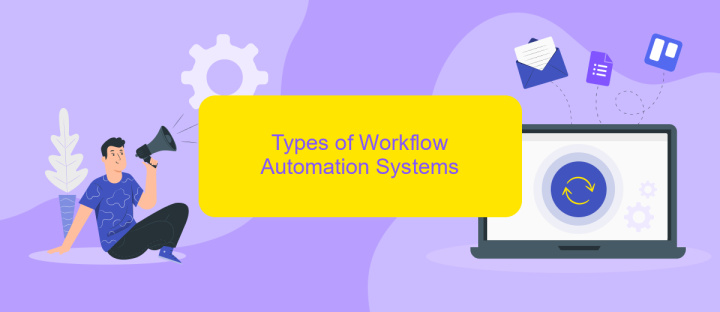Workflow Automation Systems
Workflow automation systems are revolutionizing the way businesses operate by streamlining repetitive tasks, reducing human error, and boosting overall efficiency. These systems leverage advanced technologies such as artificial intelligence and machine learning to automate complex processes, enabling organizations to focus on more strategic activities. In this article, we explore the key benefits and features of workflow automation systems and how they can transform your business operations.
Introduction
Workflow automation systems have revolutionized the way businesses operate by streamlining repetitive tasks and enhancing overall efficiency. These systems are designed to automate various business processes, from simple administrative tasks to complex operational procedures, thus allowing employees to focus on more strategic activities.
- Reduction in manual errors
- Increased productivity
- Enhanced compliance and audit trails
- Better resource allocation
One of the key features of modern workflow automation systems is their ability to integrate with various third-party applications and services. For instance, ApiX-Drive is a powerful tool that facilitates seamless integration between different software solutions, enabling businesses to automate data transfers and synchronize information across platforms effortlessly. By leveraging such integrations, organizations can achieve a higher level of automation and improve their operational workflows significantly.
Benefits of Workflow Automation Systems

Workflow automation systems significantly enhance operational efficiency by streamlining repetitive tasks and reducing human error. These systems allow businesses to automate routine processes, enabling employees to focus on more strategic activities. By automating workflows, companies can ensure consistency and accuracy, which leads to higher productivity and better resource management.
Moreover, workflow automation systems facilitate seamless integration with various tools and platforms. For example, services like ApiX-Drive enable businesses to easily connect different applications, ensuring smooth data flow and communication across systems. This integration capability not only saves time but also enhances data accuracy and accessibility. As a result, organizations can make more informed decisions, improve collaboration, and ultimately achieve their business goals more efficiently.
Types of Workflow Automation Systems

Workflow automation systems are essential tools that help organizations streamline their operations and improve efficiency. These systems can vary widely in their functionalities and applications, catering to different business needs and processes.
- Rule-Based Systems: These systems operate on predefined rules and conditions. They are ideal for repetitive tasks and processes that follow a set pattern.
- Integration Platforms: These systems focus on connecting different software applications and automating data transfer between them. ApiX-Drive, for example, allows seamless integration of various services, enabling automated workflows across multiple platforms.
- AI-Powered Systems: Leveraging artificial intelligence, these systems can learn from data and make decisions. They are used for more complex and dynamic workflows that require adaptability and continuous improvement.
- Document-Centric Systems: These systems are designed to handle document-related workflows, such as approvals, reviews, and storage, ensuring that document management is efficient and secure.
Choosing the right workflow automation system depends on your organization's specific needs and the complexity of the processes you aim to automate. By understanding the different types available, businesses can make informed decisions to enhance productivity and operational efficiency.
Implementation and Best Practices

Implementing a workflow automation system requires careful planning and a strategic approach to ensure seamless integration and maximum efficiency. Start by identifying the specific processes that need automation and the goals you aim to achieve. This will help in selecting the right tools and technologies that align with your business needs.
Once the goals are set, choose a reliable automation platform. For instance, ApiX-Drive provides robust solutions for integrating various applications and services, streamlining workflows, and reducing manual tasks. Ensure the platform supports easy integration with your existing systems and offers scalability as your business grows.
- Define clear objectives and key performance indicators (KPIs).
- Select an automation tool that fits your specific needs.
- Test the system thoroughly before full-scale deployment.
- Train your team to effectively utilize the new system.
- Continuously monitor and optimize the workflows.
Effective implementation also involves regular reviews and updates to the automation processes. By keeping track of performance metrics and gathering feedback from users, you can make necessary adjustments to enhance efficiency. Remember, the goal of workflow automation is to simplify operations, so always aim for solutions that reduce complexity and improve productivity.
Current Trends and Future Directions
Workflow automation systems are increasingly leveraging artificial intelligence and machine learning to enhance efficiency and accuracy. These technologies enable predictive analytics, allowing businesses to anticipate workflow bottlenecks and optimize processes in real-time. Additionally, the integration of IoT (Internet of Things) devices is becoming more prevalent, providing real-time data that can trigger automated workflows and enhance decision-making processes. The trend towards low-code and no-code platforms is also gaining momentum, empowering non-technical users to create and manage automated workflows with ease.
Looking ahead, we can expect further advancements in the integration capabilities of workflow automation systems. Tools like ApiX-Drive are leading the way by offering seamless integration solutions that connect various applications and services without requiring extensive coding knowledge. This trend is likely to continue, making it easier for businesses to unify their digital ecosystems. Moreover, the rise of hyper-automation, which combines multiple automation technologies to achieve end-to-end process automation, is set to revolutionize how organizations operate, driving greater efficiency and innovation.
FAQ
What is workflow automation?
How can workflow automation benefit my business?
What types of processes can be automated?
How do I get started with workflow automation?
Is workflow automation suitable for small businesses?
Apix-Drive will help optimize business processes, save you from a lot of routine tasks and unnecessary costs for automation, attracting additional specialists. Try setting up a free test connection with ApiX-Drive and see for yourself. Now you have to think about where to invest the freed time and money!

